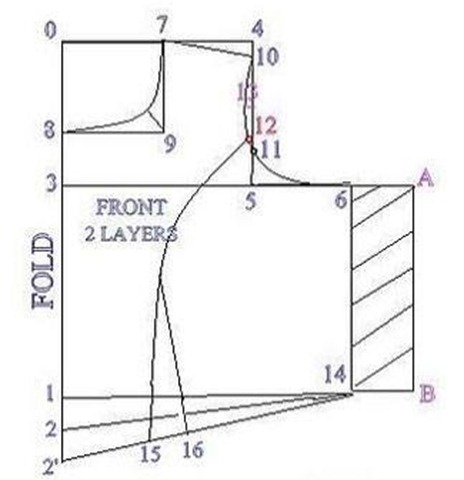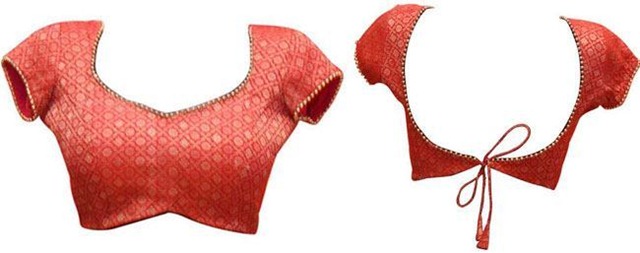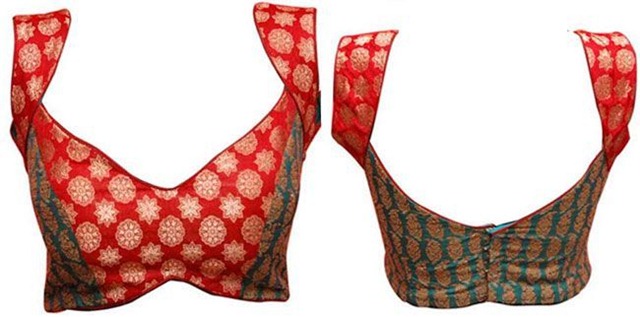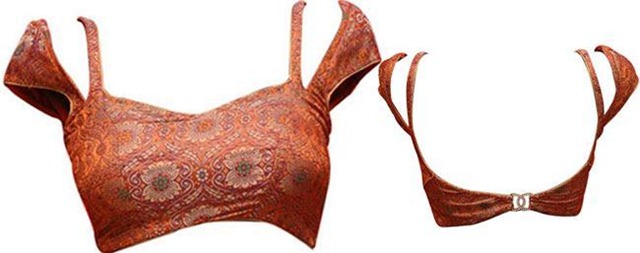If you have ever browsed through an embroidery book, especially the vintage variety, it can be a little overwhelming when trying to make sense of the different types of stitches the patterns might require. Some of the stitches may seem too challenging or perhaps laborious, but fear not, hand embroidery stitches are fun, and with practice, can become quite easy.
Let's discover the 10 best hand embroidery stitches
Once you familiarize yourself with basic stitches, you will find that they are the foundation to those more elaborate stitches that once seemed too difficult to tackle. Here are ten embroidery stitches to know as you move forward with hand embroidery.
1. Running stitch


The running stitch is good for outlining an embroidery design and is a very quick stitch to do. There are two ways to do the running stitch: the first method is similar to hand sewing and can be completed by pushing the needle and floss in and over the fabric in one continuous motion; the second method can be literally pushing the needle through the fabric and pulling it back up. I have heard this called the “punch and poke” or “stabbing” method.
2.Backstitch


Unlike the running stitch, the backstitch creates a solid line and is good for hand embroidering text or outlining a design. Begin by pulling the needle and floss up through the fabric and do one stitch forward. From underneath, space the needle out the length of your desired stitch, pull up through the fabric, and bring the needle and floss back down through the end of the previous stitch.
3. Split stitch



Similar to the backstitch, the split stitch creates a solid line with an added texture to it. This stitch is appropriate for text and outline as well, but it also works to fill designs and create variation from the running or backstitch. To begin, pull your needle and floss up through the fabric and create one straight stitch. Your needle and floss should be on the underside of your hoop. Bring the needle up through the center of the stitch you just created and stitch forward the same length as your initial stitch. Repeat by bringing the needle up through the center of each stitch.
4. Stem stitch



The stem stitch got its name from being the common stitch used for the stems of flowers or vines. I like to use this stitch for text because it can curve nicely with letters. Similar to the split stitch, you create one straight stitch forward and bring the needle and floss up underneath the fabric, but instead of going through the center of this initial stitch, you will bring the needle up just to the side of the stitch.
5. Satin stitch




A good filler stitch, the satin stitch creates a smooth appearance. I like to use this stitch to fill in hearts or the leaves of flowers. Take your needle and floss and create one stitch. Bring the needle up again just next to the opposite side of the initial stitch. Keep the stitches close to one another, as required to fill the pattern or design you are working with.
6. French knots





This is a favorite decorative stitch for almost everyone that I know. French Knots can be used to accent designs or create fun fillers for most designs. You’ll have to use two hands to create the French Knot by bringing the needle and floss up through the fabric and wrapping the floss around the needle twice. Hold the end of the floss taut and bring the needle down just next to the space where it came out through. Keep holding the floss taut as you pull the needle through. You can vary the size of your French knots by wrapping the floss around the needle anywhere between one and three times.
7. Chain stitch







I used to think I would never learn to do this stitch, then I tried it, and now I love using the chain stitch. It makes for a great outline stitch as well as a frame for a pattern or design. Take your needle and floss and create a stitch, but before you pull the floss all the way through the fabric, allow it to form a loop. Bring the needle up through that loop in order to tether it from being pulled all the way through the fabric and pull. Place the needle either directly in the hole you just stitched, or close to it, and pull through creating another loop by not pulling the floss completely through the fabric. Pull the needle up through the loop to tether it and pull. Repeat the steps to continue the chain. When you reach the end of the chain, simply create a small stitch over the loop.
8. Lazy daisy



This is a version of the chain stitch often referred to as the "detached chain stitch" or "lazy daisy." Instead of continuing the chain, there is a small stitch made just over the end of the loop to create what looks like a daisy petal. Just like the chain stitch, take your needle and floss and create a stitch, but before you pull the floss all the way through the fabric, allow it to form a loop. Bring the needle up through that loop in order to tether it from being pulled all the way through the fabric and create a small stitch over the top of the loop. Space out the next loop or use the stitch to create a daisy.
9. Feather stitch



Another variation of a chain stitch is the feather stitch. This stitch looks great as a frame or border to an embroidered piece. Similar to the chain stitch, you will use the second stitch to anchor the loop of the previous stitch, but this stitch covers more space. Bring the needle and floss up through the fabric and create a straight stitch, but don’t pull the floss all the way through. Allow a loop to form and bring the needle up through that loop. Space the next stitch over in the opposite direction from the previous stitch. Create another loop by not allowing the floss to go completely through the fabric. Pull the needle up through the loop and repeat on the opposite side.
10. Seed stitch



This is a good filler stitch. Depending how close or far you space out your seed stitch, you can create a wide fill or layers of floss that appear to have dimension. Imagine tossing the contents of a seed packet into the air and watching the seeds fall randomly on the ground. That same concept applies here. Bring the needle and floss up through the fabric and create a straight stitch. Bring the needle and floss up through the fabric again in a different angle. Continue until you have a filled area.

These stitches in no way comprise the totality of gorgeous hand embroidery stitches that exist, but they are exactly what you need to get you started. If you are already a seasoned embroiderer, maybe these will remind you to revisit those old tried and true stitches you may not have used in a while. I had forgotten how much the chain stitch used to intimidate me, but now, I'm so glad I tried it because it really is a fun stitch.
Source :- http://www.craftsy.com/blog/2014/04/hand-embroidery-stitches/
Article By :- Kristen Valencia













































